A Hydrangea…By Any Other Name
It’s clear by just quickly looking over our yard that hydrangeas are one of Britt’s and my favorite plants…particularly during the late spring and summer months. Not only do we love their massive blooms popping all over our yard, we also love the life they bring when we take them inside.
And apparently we’re not alone. I find when talking to friends, family, and clients that hydrangeas are almost always on their “must have” list. So given they are a landscape favorite…particularly here in the Deep South, I thought that I’d do a series of posts on the loverly hydrangea…or as my great-grandmother would pronounce it in her South Cackalacky drawl…high’-drann-juhh!
On this post I’ll identify and quickly describe the common types of hydrangeas…and in the coming weeks I’ll include posts on…
-
- Where and how to plant & care for hydrangeas
- How & when to prune hydrangeas (which is something I’m often asked about)
- Tips for drying hydrangea flowers
If any of these topics interest you, make sure to come back to RYGblog over the next several weeks.
![]()
Know Thyself…and Thy Hydrangea – A Quick Lesson in Taxonomy
To really fully understand hydrangeas, I need to provide you with a quick biology lesson…or really a lesson on taxonomy – biological classification. Now don’t let your eyes roll too far back in your head…knowing just a little bit and focusing in on the name of your hydrangeas will go a long way in helping you get the most out of having them in your outdoor spaces.
Most hydrangeas you find in a home’s landscape are of the same Family and Genus… Hydrangeaceae Hydrangea…and these hydrangeas do have a great deal in common, e.g., big clusters of long-lasting flowers and large, deep green leaves. However, when you go down one level in taxonomy…to Species, quite a bit of variation takes place. In other words, all hydrangeas are not equal…or really, are not the same. For instance: some like sun, others like mostly shade; some bloom early, others late; some bloom on old wood, others on new; some are massive, others are smaller. So if you’re not careful to pick the right hydrangea for your space to accomplish what you’re looking for…you could get very frustrated. And no one wants to be frustrated…so keep reading.
Hydrangeas Commonly Found in Home Landscapes
Although there are others, the hydrangeas that you typically find in home landscapes are from five species of hydrangea…with one species deserving further breakdown. I’ll provide greater detail in later posts, but here’s the quick & dirty on each of these species of hydrangea:
-
- Hydrangea Arborescens: These hydrangeas have the big, white snowball-like flowers and are probably one of my favorites…we have a ton of ‘Annabelle’ hydrangeas in our yard. They’re great to bring inside to brighten things up a bit…and keep well when dried. Since they bloom on new wood (the current year’s growth), they can be pruned back hard in late fall or early spring.
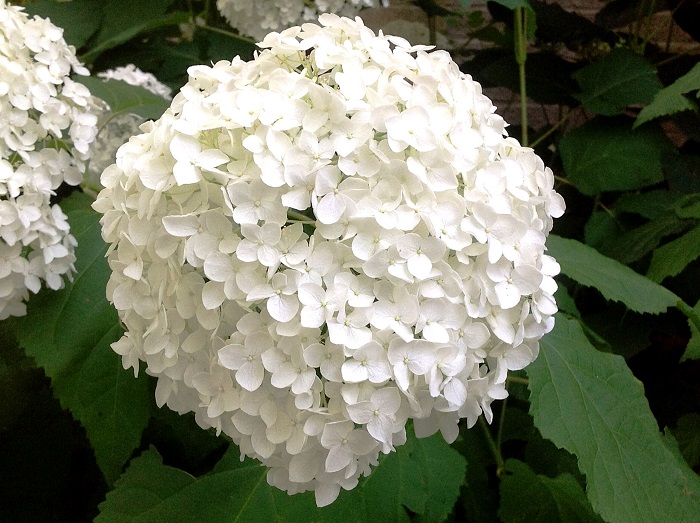
‘Annabelle’ Hydrangea (H. Arborescens)
-
- Hydrangea Macrophylla:
- Bigleaf or Mophead: Mopheads are what most people envision when you’re talking about hydrangeas…they’re the ones with the big blue rounded flowers. (See featured image at the top of the post.) Like many of the other colored hydrangeas, the cool thing about Mopheads is that you can change the color by changing the pH of their soil…blue=acidic and pink=alkaline. They are also a great cut flower to bring inside. Unlike their Arborescens cousins, Mopheads bloom on old wood (last year’s growth), so you really have to be careful when pruning them, if you must…or you could easily miss the next season of flowers.
- Hydrangea Macrophylla:
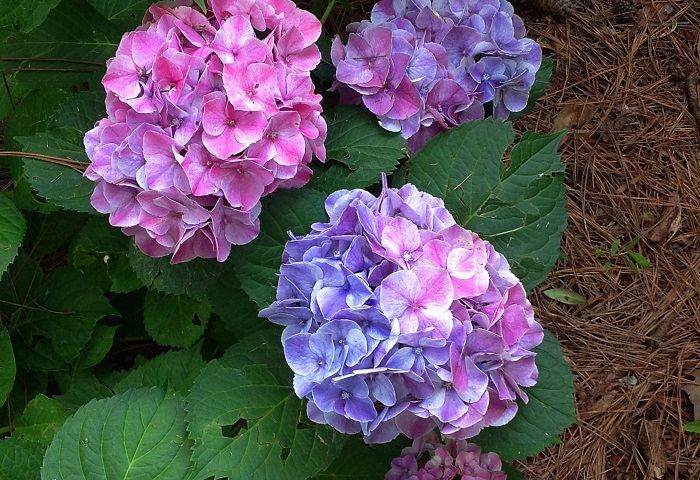
Confused Mophead Hydrangea (H. Macrophylla)…going from pink (alkaline soil) to blue (acidic soil)
-
-
- Endless Summer®: Endless Summer® hydrangeas generally have the same characteristics as their Macrophylla look-alikes, with one significant exception…some brilliant scientists figured how to get them to bloom on both new wood and old wood. So you can prune them anytime…again, if you really need to.
- Lacecap: Lacecap hydrangeas have the same growing requirements and characteristics as Mopheads…but their blooms look very different. Instead of the quintessential big’ole rounded flower, Lacecap’s flowers are almost flat. With the center of their flower looking like a cluster of unopened buds surrounded by a ring of open petals they have an airy, lace-like appearance. Not expecting this type of flower, I’ve had a number of people ask me if their hydrangeas were sick. They’re not…they’re just different…and are the right choice for certain designs.
-
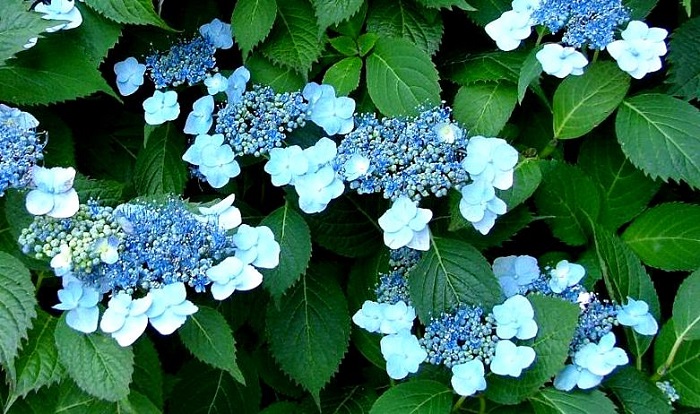
Lacecap Hydrangea (H. Macrophylla)
-
-

Young Oakleaf Hydrangea flower (H. Quercifolia)
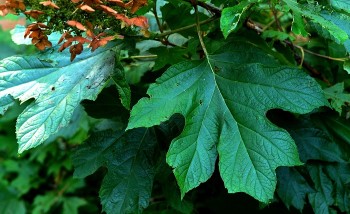
Oakleaf Hydrangea Leaf (H. Quercifolia)
Hydrangea Quercifolia: These hydrangeas are commonly called Oakleaf Hydrangea because of their massive leaves shaped like oak leaves. They have large, airy conical flowers vs. the rounded or flattened flowers of many of their cousins…and I love the sense of romance they bring to a garden. However, what I think I like most about them is the added interest they bring to my yard in the fall and into winter – their leaves turn bright shades of reddish-orange, their creamy white blooms turn pink then a rusty-red, and their bark peels back in winter as it turns orangey-brown (yes, they have bark). Their blooms grow on the tips of last year’s growth (old wood), so if you need to prune your Oakleaf Hydrangeas for structural reasons, you’ll want to do that after they bloom and do it very judiciously.
- Hydrangea Paniculata: I love the Paniculata hydrangeas that I have in my yard… ‘Tardivas’, ‘Limelights’, and ‘PeeGees’. Not only because they are big and bold…but because they love the sun. Before I knew better, I thought that any hydrangea that I had needed to be relegated to the shady parts of my yard. Not so. And…AND…I love them because they bloom later in the summer…so after all my other hydrangeas are spent, I get to enjoy looking at these beauties! These sun-loving hydrangeas, with enormous creamy white flowers, can grow as tall as 15’…and can even be trained into a tree form. However, if you don’t have enough space for one of these beautiful beasts, have no fear…there are smaller cultivars (e.g., ‘Little Lime’® grows to only 3-5’). Like their Arborescens cousins they bloom on this year’s growth (new wood)…so they can be harshly pruned back in the spring…and actually should be at times to develop a strong structure to hold up their impressive blooms. Oh, my ‘Limelights’ are one of Britt’s favorites to cut and bring into the house…and they are so big, even just throwing one into a vase makes a grand showing.
-
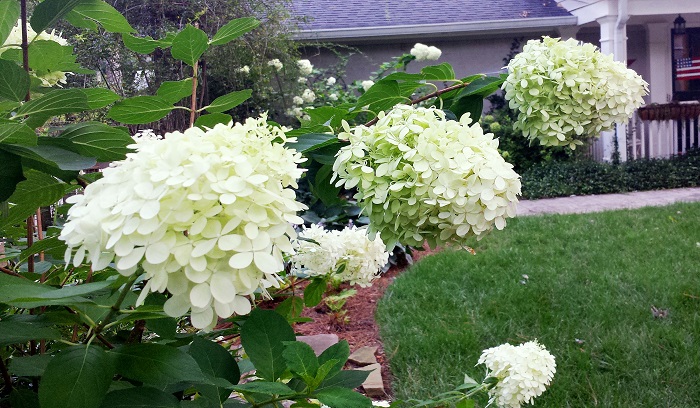
Limelight Hydrangea (H. Paniculata)
-
- Hydrangea Anamola Petiolaris: Although I haven’t had much luck with my Climbing Hydrangea, it’s my understanding that once established this unique hydrangea (…a vine) can essentially eat the side of a house…they can grow 40’+ long and cover over 200 sf of space. Its incredible climbing ability can be attributed to the fact they its roots grow from the stems and will grab a’holt of anything it touches…so you need to make sure to place it on a pretty substantial and sturdy structure. In summer it will grace its rich green foliage with creamy white lacecap-like flowers. So if you have one, be patient…it may take a while to establish, but once it does…watch out!
![]()
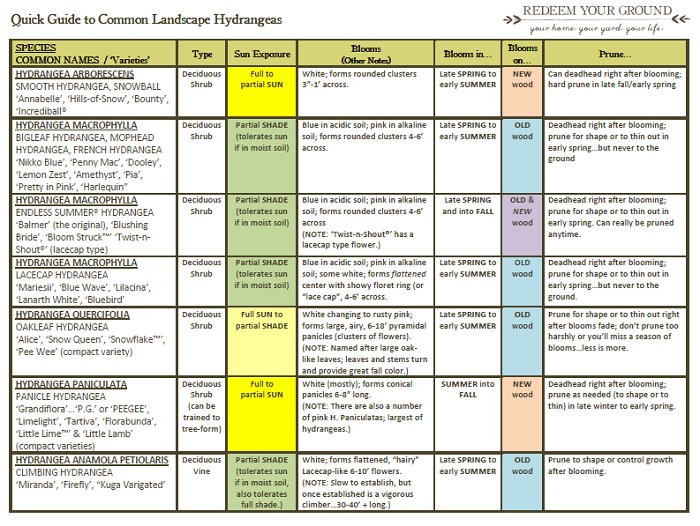 Okay, I know that’s a lot…and there’s a good deal more to know about hydrangeas to enjoy them to their utmost…I’m still learning. That said, I’m going to give this oh-so-helpful information to you in piecemeal fashion…on future posts. However, to make things easier for you now…I’ve created a table that can serve as a quick reference guide as you consider which hydrangeas are best for you. You can get it here.
Okay, I know that’s a lot…and there’s a good deal more to know about hydrangeas to enjoy them to their utmost…I’m still learning. That said, I’m going to give this oh-so-helpful information to you in piecemeal fashion…on future posts. However, to make things easier for you now…I’ve created a table that can serve as a quick reference guide as you consider which hydrangeas are best for you. You can get it here.
Take care,

You may also enjoy these posts from RYG ...
If you're not already subscribed to RYG and want to get periodic updates, links to new posts & other ground redeeming info ... just enter your email address below. Easy as that!



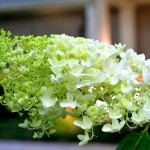
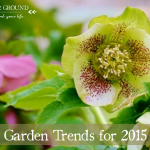
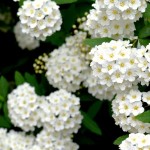
I just made a copy of your reference guide. It’s great! Since I don’t have an ipod (or whatever you call that thing)
I will be able to carry this guide with me when I go to shop for Hydrangeas.
Thanks, Helen
So glad you like it Mother Dearest! I’m going to try to create similar reference guides for other gardening topics. Let me know what you might find helpful. Take care, D.(oug(las))
Thank you so much for this information! I have 3 new oak leaf Hydrangeas and 1 Mophead that I’ve had a few years. I had no idea they bloomed on old wood. I love all that I have learned by reading this. Looking forward to reading more on your site!